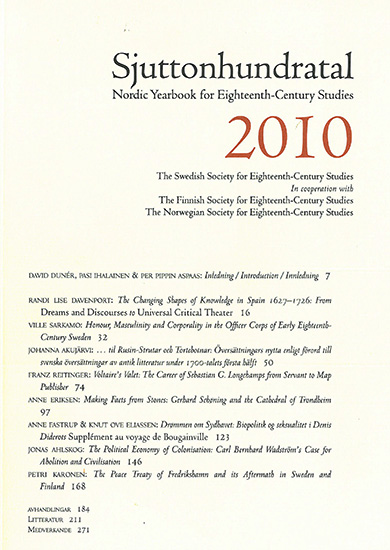Making Facts from Stones: Gerhard Schøning and the Cathedral of Trondheim
DOI:
https://doi.org/10.7557/4.2468Keywords:
Gerhard Schøning, the cathedral of Trondheim, eighteenth century antiquarianism, antiquarianism and natural history, epistemic virtueAbstract
In 1762, the historian and antiquary Gerhard Schøning published a large work on the Cathedral of Trondheim. Originally the shrine of Norway’s patron saint and christening king, Saint Olav, the building had suffered decay since the Reformation. In the eighteenth century, large parts of the medieval structure lay in ruins. Schøning’s aim was to reveal the ancient glory of the Cathedral — and, implicitly, of the nation. His meticulous work gained him a still lasting scholarly reputation. While antiquarian studies normally were occupied with documents, monuments, inscriptions and other remains that could give genealogical information about princes and nobility, Schøning’s work is distinguished by the attention given to the physical structure of the building. Even if Schøning earned great renown as a historian, the article argues that there are important affinities between his ways of producing knowledge about the cathedral and the new natural history. By the means of systematic observation and careful description, Schøning ‘dissects’ the different parts of the building, making facts from stones.Metrics
Metrics Loading ...









